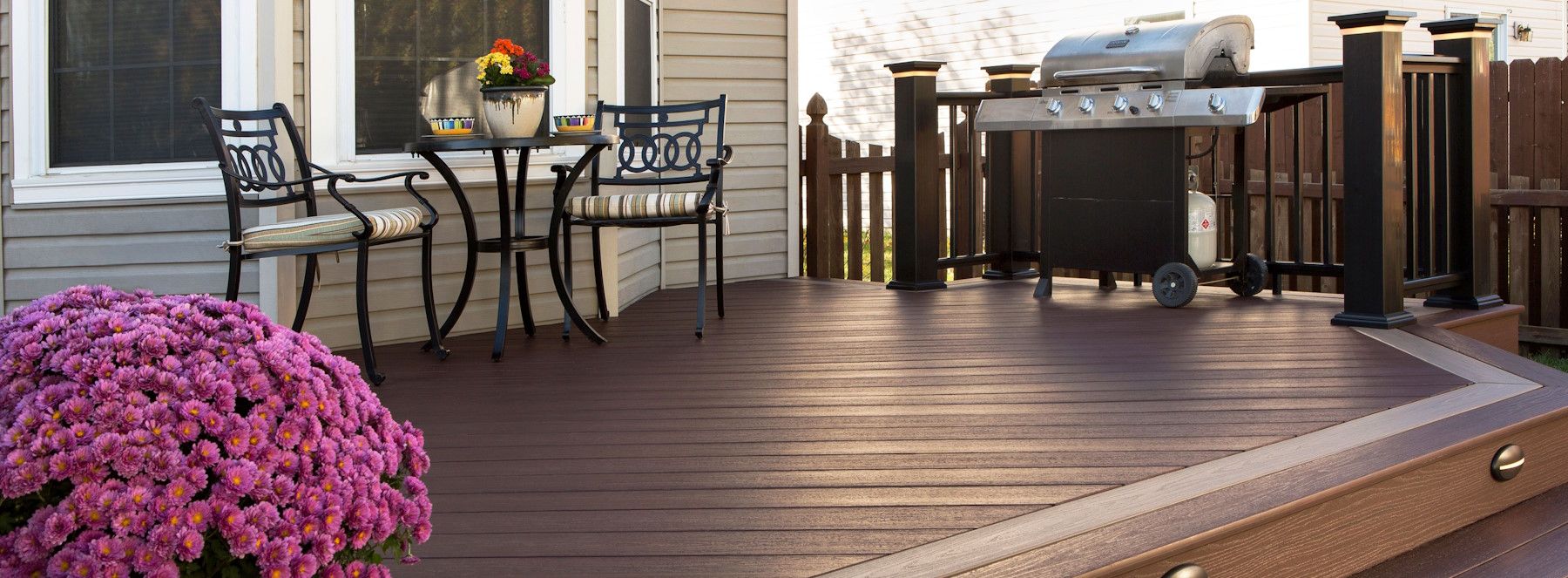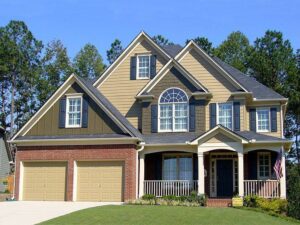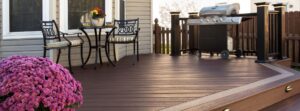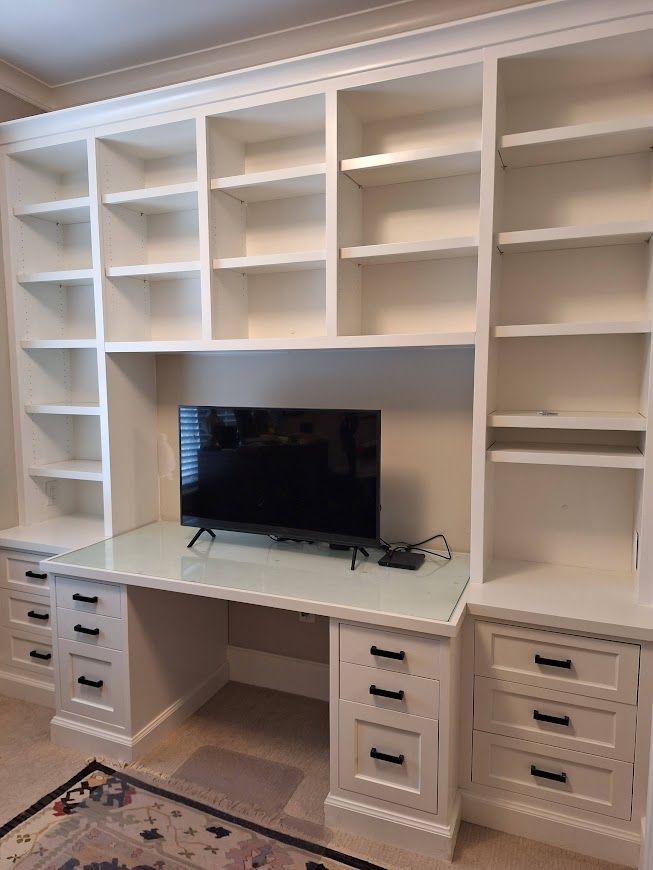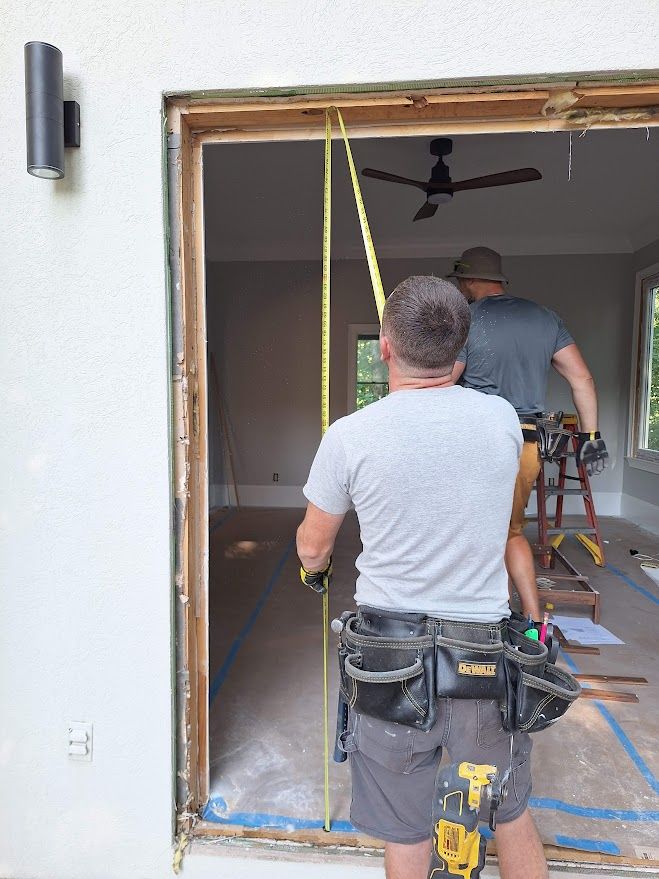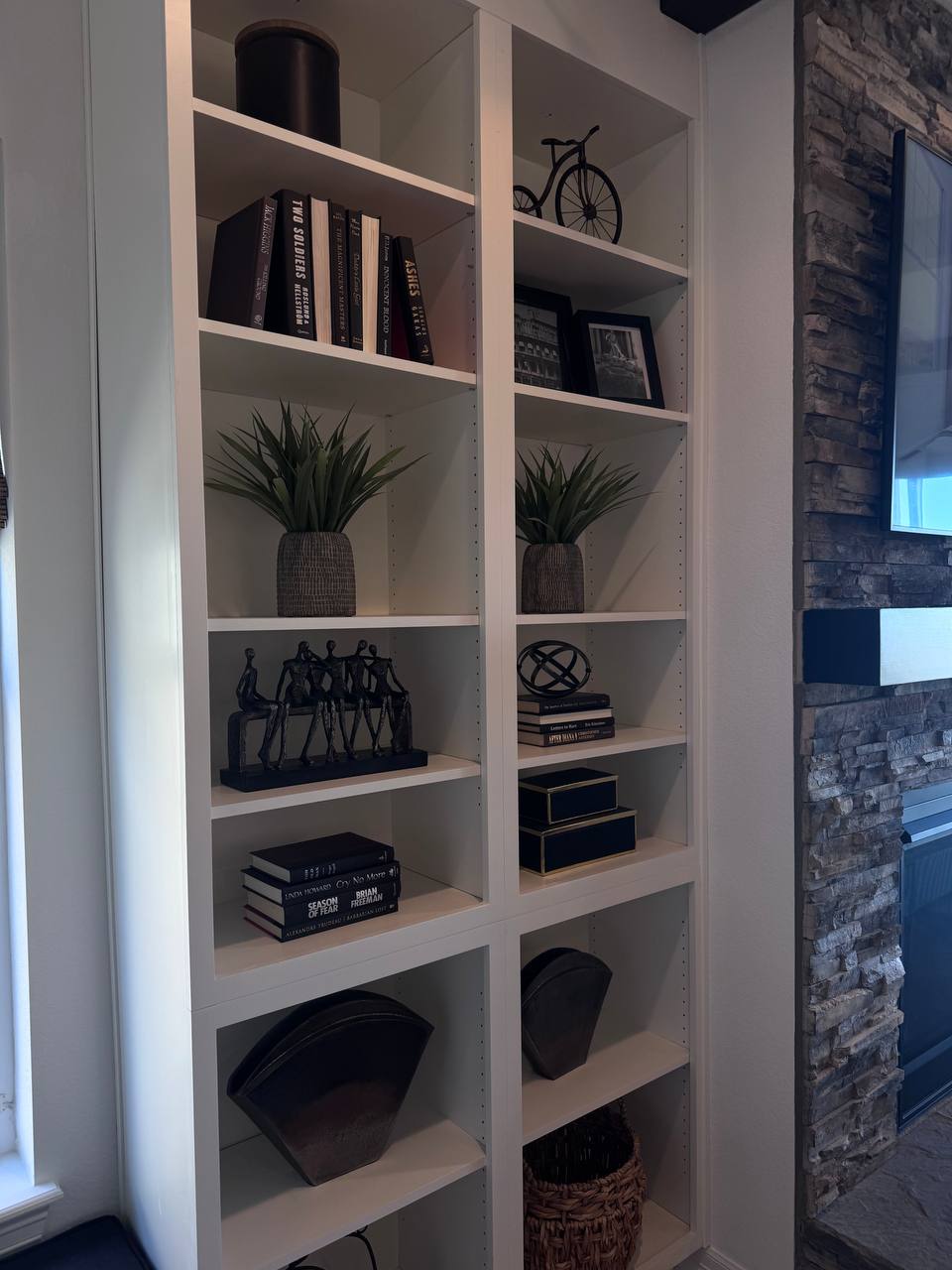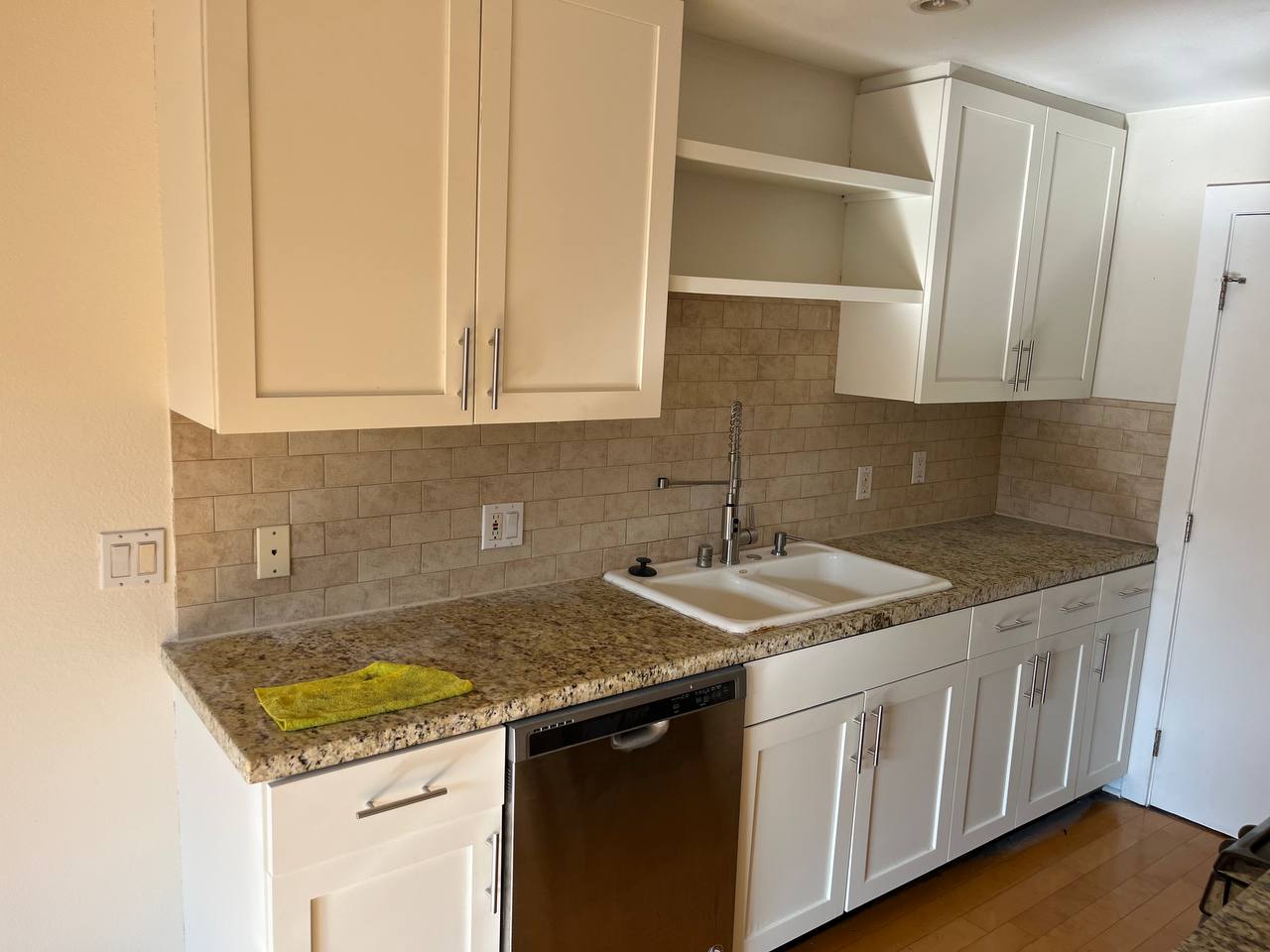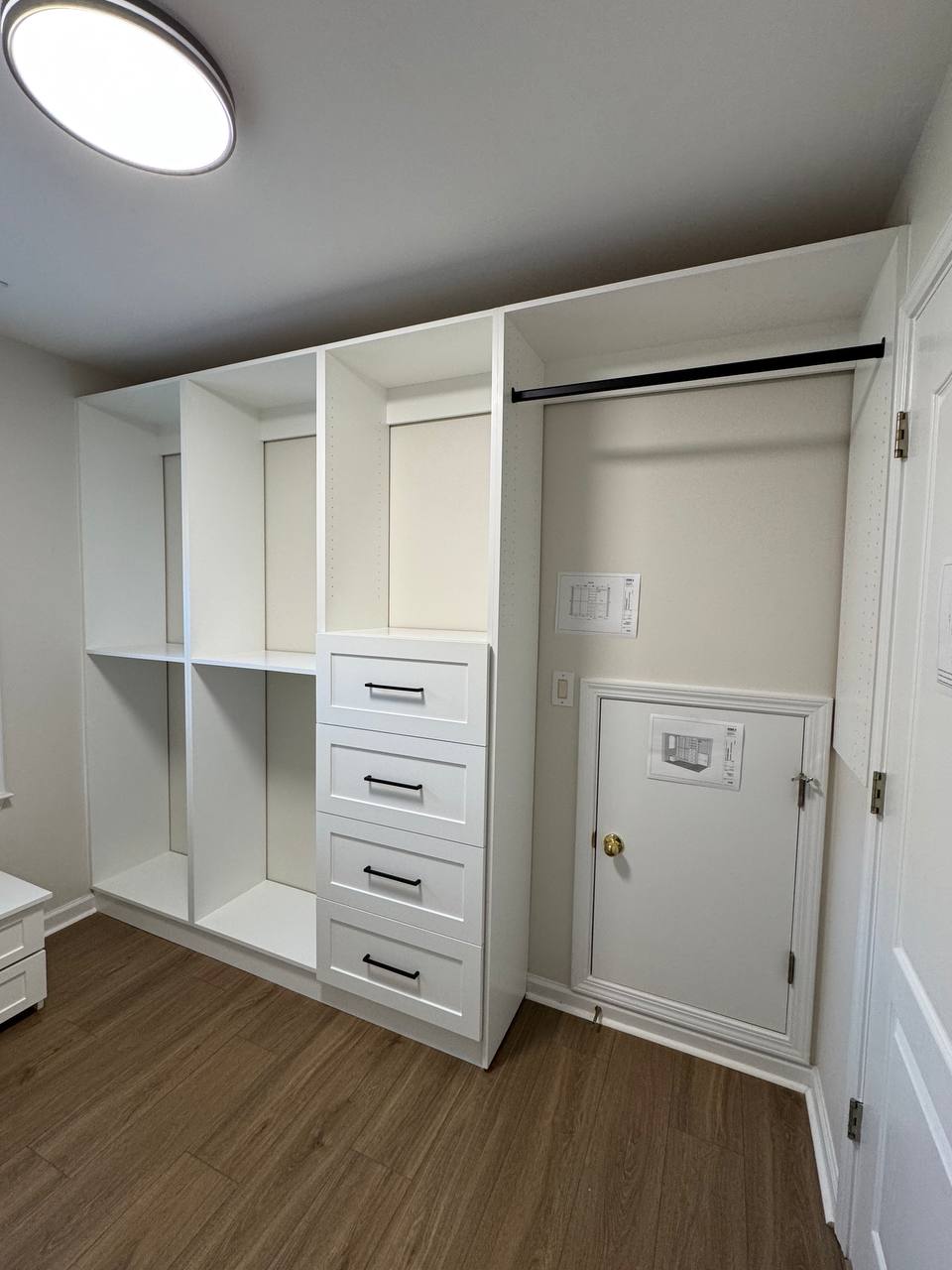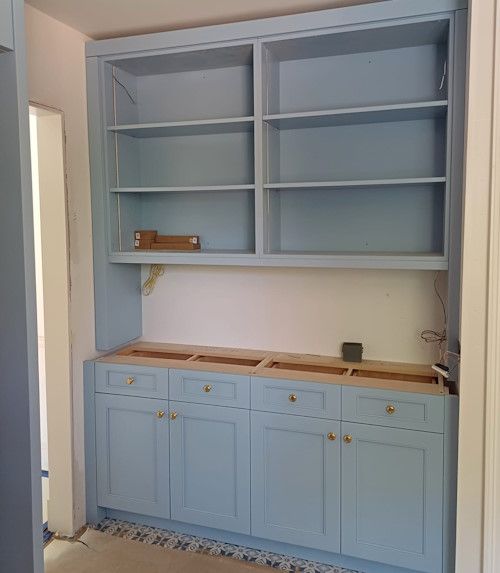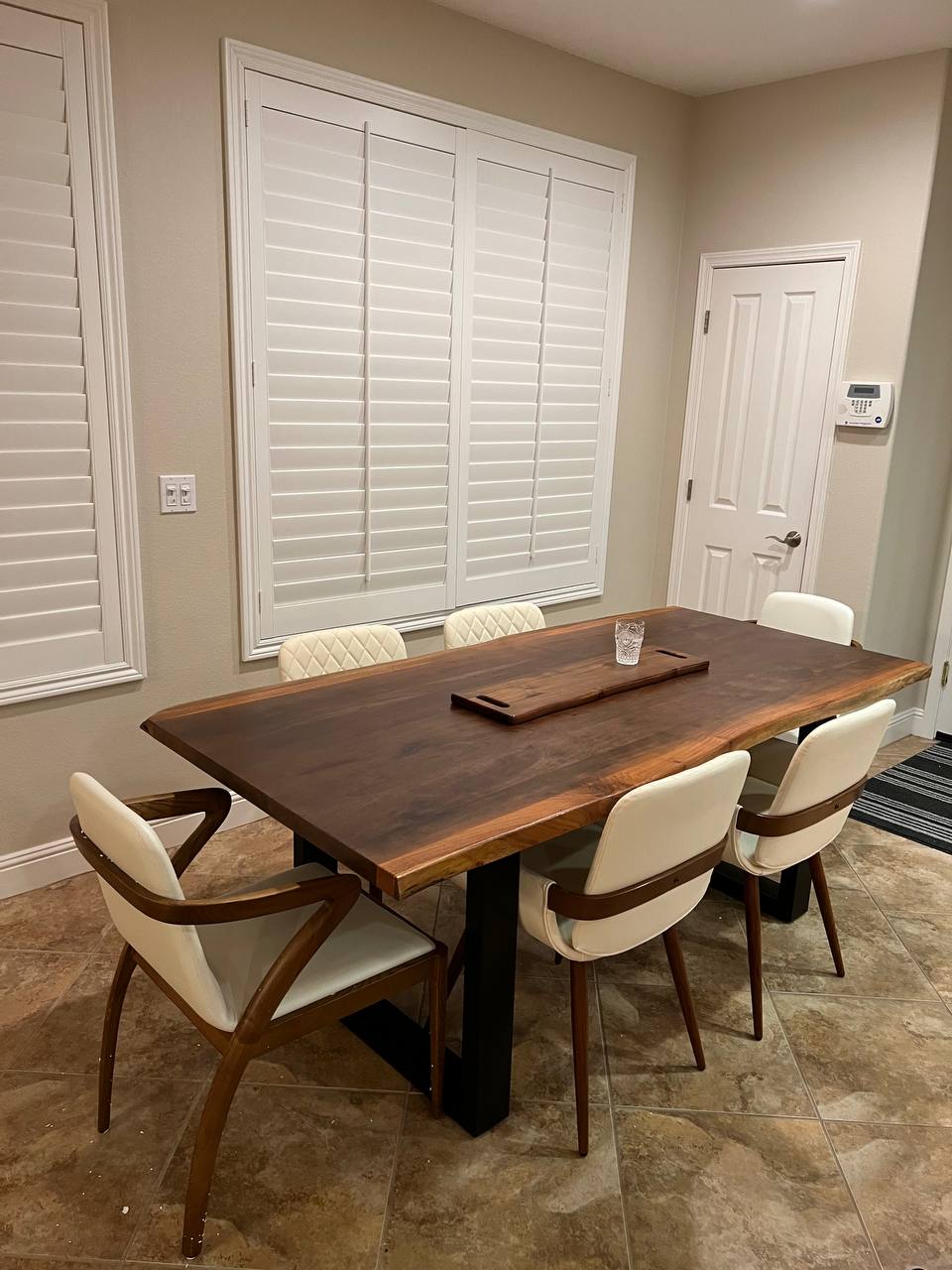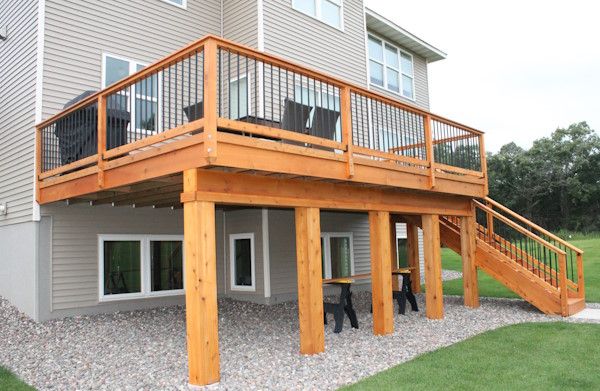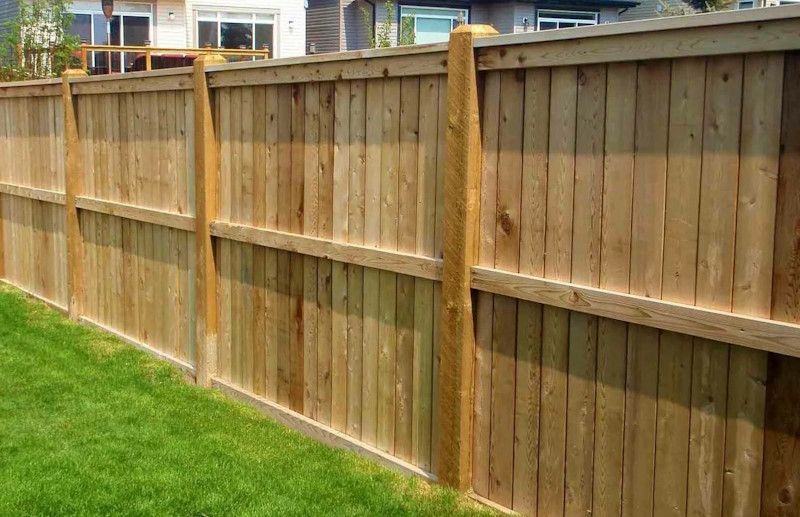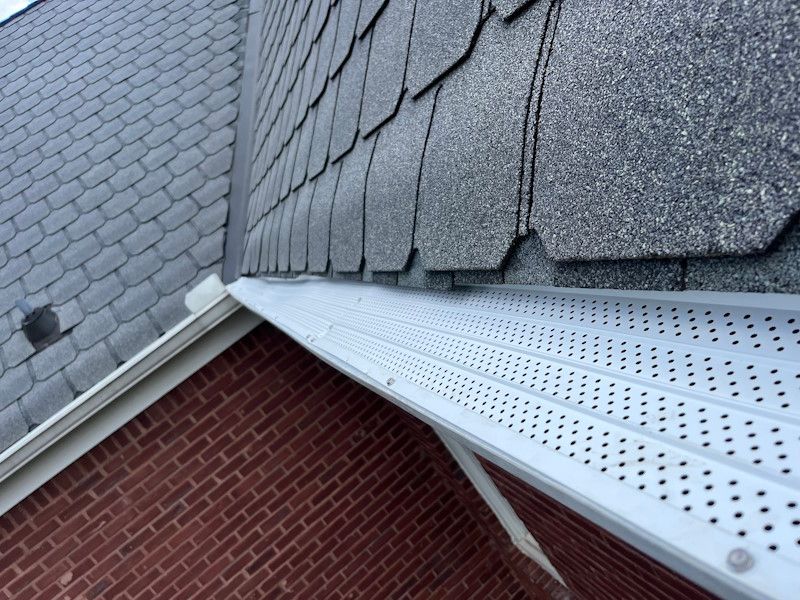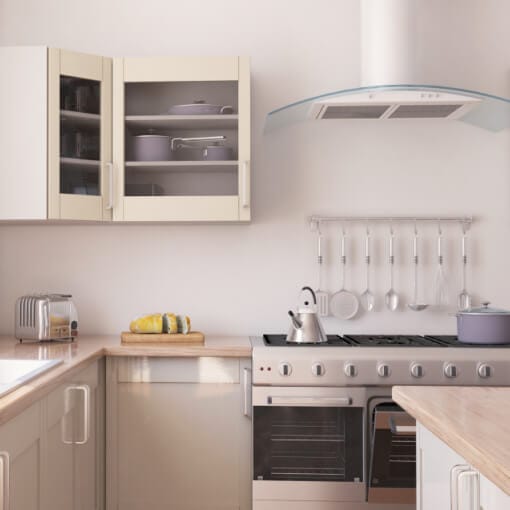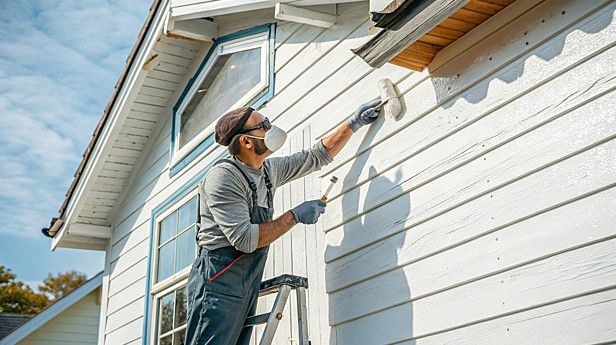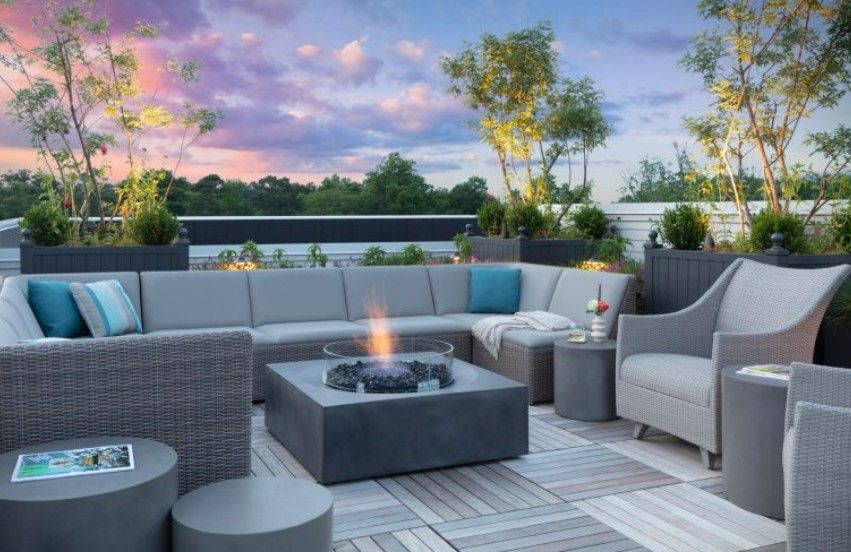An Overview of the Importance of Deck Color 👋✨
Imagine your home. You probably see more than just a building, you see a place where memories are made, where you relax, and spend time with loved ones. In that image, your deck plays a starring role.
The Deck it’s the bridge between a cozy indoor space and the fresh air, an open area for relaxation and entertainment.
But have you ever considered that the color of your deck could be more than just an aesthetic choice? In fact, it’s a significant investment decision that can substantially increase your home’s value and appeal.
Why Color Choice Matters
The color of your deck is one of the first things a potential buyer or guest in your backyard will see.
Deck color is a key design element that connects the home to the surrounding landscape and directly affects its curb appeal, overall mood, and market value.
The right color will highlight your home’s architectural style and create a sense of maintenance and functionality, which directly impacts its perceived value. This isn’t just a cosmetic update, it’s a strategic investment that pays off in the long run.
More Than Just Color: How Your Deck’s Hue Impacts Resale Value
A deck’s hue is a powerful tool for managing first impressions.
The right color can visually expand the space, making it feel cozier and more inviting. For example, light tones can create a sense of airiness and spaciousness, while dark tones can add luxury and depth.
Conversely, a poorly chosen or faded color can give an impression of neglect and outdated style, potentially lowering your home’s value in a buyer’s eyes. We will help you avoid these mistakes and choose a shade that works for you.
What You Will Learn from This Article: A Homeowner’s Guide
In this article, we’ll delve into how your deck’s color choice affects your home’s value. We’ll introduce you to the 5 best colors that are proven to boost a property’s appeal, and we’ll provide practical advice on how to choose, apply, and maintain them. This information is your guide to creating a perfect exterior that is not only beautiful but also adds to your financial equity.
Understanding How Color Influences Home Value 🧠💰
Before we get to the specific colors, it’s important to understand why some shades are valued more than others. It’s not just about trends, but about deep psychology and practicality.
The Psychology of Color in Exterior Design: What Do Shades Say?
Colors have their own language.
Warm tones (reds, oranges, browns) are associated with coziness, warmth, and hospitality. They can create a feeling that a home is a safe and comfortable place.
Cool colors (blues, grays, greens) evoke a sense of calm, order, and modernity. Light shades make a space feel more open and airy, while dark ones add drama and depth.
By understanding these principles, you can choose a color that conveys the desired mood and makes your deck appealing to a wide range of people.
Factors That Determine the Ideal Deck Color
- Home’s Architectural Style: The color of your deck should harmonize with your home’s overall style. For a Victorian home, traditional colors will work well, for a modern one, understated and minimalist tones are best, and for a farmhouse, natural and rustic shades are ideal.
- Surrounding Landscape and Vegetation: Take into account the colors of your surroundings: the greenery of the garden, the shades of stones, the color of the facade. For example, a sage green deck will look beautiful surrounded by lush greenery, while a light gray shade will look great against a manicured lawn and stone.
- Climate Conditions: In hot climates, light-colored decks are more practical because they reflect sunlight and heat up less. In cooler regions, you can confidently choose dark tones. Also, consider how sunlight affects color fading.
- Personal Preference and Trends: Your personal taste is important, but for investment appeal, you should also consider market trends. Neutral and classic colors are always in style and are more likely to appeal to buyers than bright or specific shades.
Top 5 Deck Colors That Increase Home Value 🏆🎨
- 🖼️ (Image of a deck in natural wood tones)
1. 🪵 Natural Wood Tones: A Timeless Classic
Why Natural Tones? Ageless Elegance and Versatility
Natural wood tones are a fail-safe choice that never goes out of style. They give the deck an organic, warm, and inviting look. These colors easily fit into any architectural style and create a feeling of unity with nature.
Best Options and Their Advantages:
- Light Oak/Natural Cedar: This shade makes the deck look visually larger and brighter. It reflects light perfectly, creating a sense of cleanliness and freshness.
- Mahogany/Redwood: Rich, saturated tones that add a touch of luxury and prestige. They are perfect for traditional and classic homes.
- Teak: Durable and long-lasting, with a beautiful golden tone that develops a rich patina over time.
What to Pair with It:
These tones harmonize perfectly with green foliage, a white facade, and cream-colored accents. They are suitable for classic, rustic, and even modern homes.
- 🖼️ (Image of a deck in cool gray tones)
2. 🌬️ Cool Gray: Modernity and Sophistication
Why Cool Gray? Style, Versatility, and Practicality
Gray is the choice for those who want to give their home a modern and elegant look. It creates a sense of order and minimalism, and importantly, it perfectly hides dust and minor dirt, making the deck more practical to maintain.
Best Options and Their Advantages:
- Light Gray/Pewter: Makes the space feel airy and open. Ideal for smaller decks.
- Medium Gray/Slate Gray: A balanced and versatile shade that is easy to pair with other colors.
- Charcoal Gray/Anthracite: Gives the deck a bold and deep look, which looks particularly striking with contrasting colors.
What to Pair with It:
Gray pairs beautifully with white, black, blue, and bright color accents. It is suitable for minimalist, modern, and contemporary homes.
- 🖼️ (Image of a deck in white or light cream)
3. ⚪ Classic White or Light Cream: Freshness and Space Expansion
Why White/Light Tones? Cleanliness, Heat Reflection, and a Sense of Space
White is always associated with cleanliness, freshness, and openness. It visually expands the space, creating a sense of airiness. Furthermore, light colors reflect sunlight, making the deck cooler on hot days.
Best Options and Their Advantages:
- Pure White: Maximum contrast and freshness.
- Ivory/Cream: A softer and warmer shade of white that creates a cozy feeling.
- Greige (Gray with a Beige Undertone): A versatile hybrid that combines the warmth of beige with the practicality of gray.
What to Pair with It:
It goes with everything! It’s the perfect backdrop for vibrant plants, dark furniture, and colorful accessories. It’s ideal for coastal, farmhouse, and colonial styles.
- 🖼️ (Image of a deck in charcoal black or deep brown tones)
4. ⚫ Charcoal Black or Deep Brown: Drama and Elegance
Why Dark Tones? Boldness, Modernity, and Contrast
Dark colors are the choice for those who aren’t afraid to experiment and want to create a bold, modern look. They add depth and elegance to the deck and can make it feel cozier, creating a sense of an intimate space.
Best Options and Their Advantages:
- Deep Chocolate Brown: A rich and saturated shade that adds sophistication.
- Near-Black Espresso: A very modern and dramatic choice that looks great with minimalist design.
- Deep Red-Brown: Adds warmth and richness, perfect for homes with brick elements.
What to Pair with It:
Dark tones look great with white, light gray, and bright green accents. They are perfect for modern, industrial, and minimalist designs.
- 🖼️ (Image of a deck in blue-gray or sage green)
5. 🌊 Blue-Gray or Sage Green: Calm and Harmony with Nature
Why Nature Tones? Calm, Freshness, and Uniqueness
These colors are the perfect compromise for those who are looking for something different from traditional shades but want to maintain a neutral and calm feel. They create a sense of unity with nature, making the deck a relaxing sanctuary.
Best Options and Their Advantages:
- Misty Blue-Gray: Creates a sense of coolness and relaxation, ideal for coastal homes.
- Sage Green: A natural and soothing color that blends perfectly with garden greenery.
- Greige with Green Undertones: A unique and harmonious shade that adds individuality.
What to Pair with It:
These colors harmonize with natural materials (wood, stone), as well as with white and cream. They are suitable for cottage, coastal, and rustic styles.
Expert Tips for Choosing the Ideal Deck Color 💡🛠️
Choosing the perfect color is only half the battle. It’s also important to consider materials and maintenance rules.
Considering Your Deck Material: Wood, Composite, and More
- Wood Decks
For wood, there are stains, sealers, and paints. Stains penetrate the wood to highlight its natural texture, while paints create a solid coating. - Composite Decks
Usually have a limited color selection, but they are more resistant to fading and require less maintenance. - Stone/Tile
Color selection here depends on the type of material. It’s important to note that tiles can be slippery when wet.
Test-Driving Your Color: The Importance of Samples and Test Patches
Never choose a color based solely on a picture. Buy small samples and apply them to a discreet area of your deck. See how the color looks in different lighting—morning, noon, and evening. This will help you avoid unpleasant surprises.
Durability and Maintenance: How to Preserve Your Deck’s Color
Regular cleaning and re-coating are the key to your deck’s longevity and beauty. Protect it from UV rays, moisture, and mold with high-quality products. On average, a wood deck needs to be re-treated every 2-5 years.
Economic Aspect: Investing in Color 💰
Choosing a deck color isn’t just a cosmetic update, it’s a strategic financial investment that can provide a significant return on investment (ROI) when you sell your home.
Material Costs
The price range for deck paints and stains is quite broad. While budget-friendly options might be tempting, they are often less durable and require frequent reapplication. Premium materials, although more expensive upfront, provide superior protection, a richer and more lasting color, and a longer lifespan, making them a more cost-effective choice in the long run.
| Material | Cost Range | Lifespan |
|---|---|---|
| Premium Deck Stain | $35-$65 per gallon | 3-5 years |
| Quality Paint | $25-$50 per gallon | 4-6 years |
| Composite Decking | $8-$12 per sq.ft. | 25+ years |
| Professional Application | $3-$5 per sq.ft. | Depends on product |
Quality vs. Price
When selecting deck finishing materials, you should always prioritize quality over price. Inexpensive products can fade, crack, or peel in just a year, leading to repeat costs for materials and labor. High-quality stains and paints contain more pigment and better binding agents, ensuring reliable protection and long-lasting color. This is an investment that pays off by saving you hassle and preserving your home’s aesthetic for years to come.
Long-Term Return
A well-chosen and professionally applied deck color improves your home’s curb appeal, making it more desirable to potential buyers. This can lead to a faster sale and even an increase in the asking price. The investment in a quality finish and the right color pays for itself not only with a better look but with real money.
ROI of Your Color Choice
Real estate studies show that exterior improvements, including staining a deck in a popular neutral color, can yield an ROI of 70-100% or more. A deck that looks like a well-maintained and modern living space adds perceived value to a home.
Statistics on Value Increase
According to the Remodeling Impact Report, a quality deck finish can add 50% to 80% of its cost to the resale value of a home. While there’s no separate statistic specifically for color, it is an integral part of a “quality finish.” Homes with attractive, well-kept decks often sell faster and at a higher price than similar properties with neglected or outdated decks.
Appeal to Renters and Buyers
For potential buyers or renters, a deck is an additional living space. An attractive and modern deck can be the deciding factor when choosing between similar properties, which is especially important in a competitive real estate market.
Common Mistakes When Choosing a Deck Color ❗
Avoiding these common mistakes will help you make the right choice and avoid disappointment:
Too Bright or Extravagant Colors
While bright colors might appeal to your personal taste, they rarely increase a home’s value on the market. Most buyers prefer neutral and versatile shades that are easier to adapt to their own style. A color that is too specific can deter a wide range of potential buyers.
Using Cheap, Low-Quality Materials
Saving money on paint or stain almost always leads to extra costs and problems down the road. Cheap materials fade and peel quickly, failing to provide proper protection for the wood, which results in the need for repainting in just a year or two. Choose products specifically designed for decks, with UV protection and resistance to wear and tear.
Ignoring the Home’s Overall Design and Landscape
Remember that your deck is part of your home’s overall exterior. The Deck color should harmonize with the facade, roof, and windows, as well as with the surrounding greenery and landscape features. A haphazard color choice, made without considering the overall style, creates a visual disconnect and diminishes the property’s overall appeal.
Not Using Test Samples
As mentioned, applying test samples to the actual deck surface under different lighting conditions is a crucial step. Skipping this “test-drive” is a sure way to be disappointed with the finished result.
Tools for Color Visualization 🛠️
Visualization Apps
In today’s world of technology, choosing a color has become much simpler thanks to specialized mobile apps. For example, giants like Sherwin-Williams with their ColorSnap® Visualizer app or Benjamin Moore with their Color Portfolio® offer powerful tools for virtually “trying on” colors.
How does it work? You simply upload a photo of your deck or use your phone’s camera in real-time, and then virtually “paint” it with various shades from the brand’s extensive palette. This allows you to see how your chosen color will look on your deck before you even pick up a brush, making the decision process much easier.
Virtual Tools on Manufacturer Websites
It’s not just mobile apps, the websites of most major paint and stain manufacturers also offer their own online color selection tools. In addition to visualization capabilities, many of them include material calculators that help you estimate how many gallons of paint or stain you’ll need based on your deck’s area.
This allows you to not only choose the ideal color but also plan your project budget, making the process more predictable and manageable.
The Importance of Physical Samples
Despite the convenience and technology of digital tools, it’s always important to remember that a digital color on a screen can differ from the real thing. The reasons can vary, from monitor calibration to the type of lighting during the shoot. Therefore, after you’ve narrowed down a few options using apps, be sure to buy physical color samples (the smallest cans or testers).
Apply them to a small, inconspicuous area of your deck or to a board made of the same material, and evaluate the result at different times of the day and in various lighting conditions (sun, shade, overcast). Only then can you be absolutely sure of your final color choice, ensuring it will look exactly as you envisioned.
How to Make the Final Decision 🤔
Making the final decision on your deck’s color is the culmination of the entire process. Here are a few steps to help you:
Selection Method
- Narrow down your choices: From all the possible options, select 2-3 favorites based on the recommendations in this article, your home’s style, and your personal preferences.
- Take a test drive: Buy samples and apply them to your deck. Live with these samples for at least a few days, observing them at different times of day and in various weather conditions.
- Get a second opinion: Ask for input from friends, neighbors, or family members whose taste you trust. A fresh perspective can sometimes reveal details you might have missed.
Consultations with Designers
If you’re still in doubt, a professional exterior designer can offer invaluable help. They have deep knowledge of color psychology, current trends, and color compatibility, and can take into account the smallest details of your home and landscape to suggest the most harmonious and profitable solution.
Study the Local Real Estate Market
Walk around your neighborhood or browse home listings on real estate websites. Pay attention to which deck colors are most popular and look the most appealing in your region. This will give you an idea of the preferences of potential buyers in your local market.
Personal Preference vs. Investment Appeal
Ultimately, it’s important to strike a balance between your personal preferences and what is most beneficial from an investment standpoint. Remember that neutral, universal colors most often yield the best ROI, but if you plan to live in this home for a long time, choose a color that will bring you joy every day.
Frequently Asked Questions (FAQ) About Deck Colors ❓
- What is the most popular deck color for home resale?
👉 Neutral wood tones and cool grays. They are versatile and appeal to most people. - Does climate affect the choice of deck color?
👉 Yes. Lighter colors are better for hot climates, darker colors heat up faster. - Can you repaint a deck from a dark color to a light one?
👉 Yes, but it requires thorough surface preparation and possibly the use of a special primer. - How long does deck color last?
👉 It depends on the material, the type of paint/stain, and maintenance, but typically 2-5 years. - Should I paint my deck a different color from my house?
👉 Yes, this often creates a beautiful contrast, but it should be harmonious.
Conclusion: Invest in the Beauty and Value of Your Home 💖🏡
A Brief Summary of Key Ideas: What to Remember About Deck Color
Choosing your deck’s color is not a minor detail but a strategic decision that directly impacts your home’s value. Neutral wood tones, cool gray, classic white, deep brown, and blue-green shades are the 5 best options that will boost your property’s appeal.
Remember: Your Deck is Not Just About Beauty, but Also an Investment
Remember that a well-maintained and beautifully colored deck is an investment that will pay off over time. The right color and regular care make it an attractive asset that will please you and potential buyers for years to come.
Have Questions? Contact Handyman Expert!
We are always ready to help you with your project. Contact us for a consultation. Explore other articles on our website to learn more about making your home perfect.
